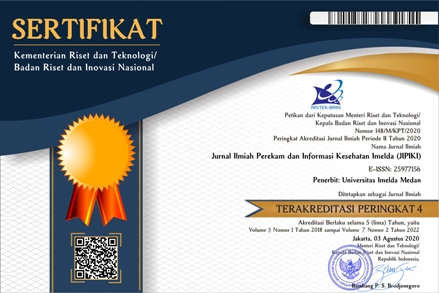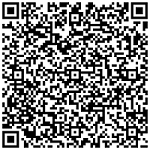Faktor yang Memengaruhi Penggunaan Sistem Informasi Rumah Sakit Berdasarkan Metode Technology Acceptance Model di RSU Advent Kota Medan
Abstrak
Until now, there is no guarantee that every hospital is able to implement a Hospital Information System (SIRS) properly. Medan Adventist General Hospital has organized SIRS since 2018, but its use is still not optimal. This study aims to determine the factors that influence the use of SIRS with a technology acceptance model approach. The data used is primary data. The total respondents obtained in this study were 197 and the statistical tests used were chi-square and structural equation modeling.. The regression weight test showed that perceived usefulness was only significantly influenced by length of work experience (e = 0.173), and computer facilitation (e = 2.235). Meanwhile, perceived ease of use was only significantly influenced by length of work experience (e = -0.223), ability to operate computers (e = 0.439) and computer facilitation (e = 4.842).
##plugins.generic.usageStats.downloads##
Referensi
[2] K. K. R. Indonesia, “Roadmap Sistem Informasi Kesehatan Tahun 2011–2014.” Sekretaris Jenderal Kementerian Kesehatan Republik Indonesia Jakarta, 2012.
[3] P. W. Handayani, A. N. Hidayanto, A. A. Pinem, I. C. Hapsari, P. I. Sandhyaduhita, and I. Budi, “Acceptance model of a hospital information system,” Int. J. Med. Inform., vol. 99, pp. 11–28, 2017.
[4] P. W. Handayani, A. N. Hidayanto, and I. Budi, “User acceptance factors of hospital information systems and related technologies: Systematic review,” Informatics Heal. Soc. Care, vol. 43, no. 4, pp. 401–426, 2018.
[5] B. I. Ahmad, “User acceptance of health information technology (HIT) in developing countries: a conceptual model,” Procedia Technol., vol. 16, pp. 1287–1296, 2014.
[6] E. Saputra, “Analisis penerimaan sistem informasi manajemen rumah sakit umum daerah Bangkinang menggunakan metode technology acceptance model (TAM),” J. Sains, Teknol. dan Ind., vol. 10, no. 2, pp. 229–235, 2014.
[7] J.-M. Palm, I. Colombet, C. Sicotte, and P. Degoulet, “Determinants of user satisfaction with a clinical information system,” in AMIA Annual Symposium Proceedings, 2006, vol. 2006, p. 614.
[8] M. Khalifa and O. Alswailem, “Hospital information systems (HIS) acceptance and satisfaction: a case study of a tertiary care hospital,” Procedia Comput. Sci., vol. 63, pp. 198–204, 2015.
[9] S. S. Al-Gahtani, “Computer technology acceptance success factors in Saudi Arabia: an exploratory study,” J. Glob. Inf. Technol. Manag., vol. 7, no. 1, pp. 5–29, 2004.
[10] A. Chavoshi and H. Hamidi, “Social, individual, technological and pedagogical factors influencing mobile learning acceptance in higher education: A case from Iran,” Telemat. Informatics, vol. 38, pp. 133–165, 2019.
[11] M. S. M. Ariff, S. M. Yeow, N. Zakuan, A. Jusoh, and A. Z. Bahari, “The effects of computer self-efficacy and technology acceptance model on behavioral intention in internet banking systems,” Procedia-Social Behav. Sci., vol. 57, pp. 448–452, 2012.
[12] A. Raman and S. B. Shariff, “Relationship between technology leadership, ICT facility, competency, commitments and teachers practices on implementations with effective teacher’s management tasks in schools,” Sch. Int. J. Multidiscip. Allied Stud., vol. 4, no. 9, pp. 88–96, 2017.
##submission.copyrightStatement##
##submission.license.cc.by-sa4.footer##










